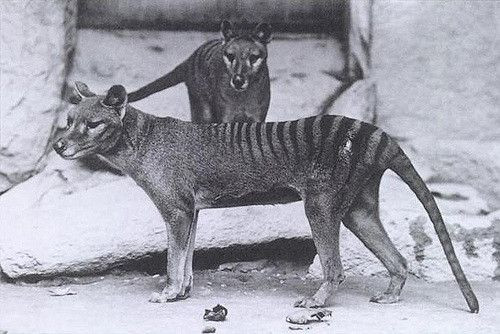Are Tasmanian tigers really extinct? 'Sightings' in remote Queensland peninsula trigger new search
Scientists plan to do research in the Cape York Peninsula after 'sightings' of the extinct carnivore were reported.

Scientists will set up more than 50 camera traps in the remote Cape York Peninsula (on the tip of northern Australia) in the hope of spotting Tasmanian tigers, a species which was declared extinct in 1936.
In recent years, a growing number of "sightings" of the species has led researchers to wonder whether the Tasmanian tiger, also known thylacine, has really disappeared forever.
There is no doubt that the wolf-like Tasmanian tigers once existed on the Australian mainland as physical remains (both fossils and non-fossils) have been found and Aboriginal rock art also features the animal.
However, it is believed that Tasmanian tigers became extinct in 1936, when the last of its kind died in a zoo.
Accused of killing the settlers' sheep, Tasmanian tigers were hunted to extinction. A bounty scheme put in place between 1830 and 1914 was largely blamed for its eradication in Tasmania, a large island of the south east coast of Australia.
Since then, sightings of the animal have periodically been reported. Most of the time, these are cases of mistaken identity, as it is easy to confuse Tasmanian tigers with feral cats or dogs. Nevertheless, there has always been hopes that the carnivores managed to survive in isolated wilderness areas.
The Cape York Peninsula would be a perfect candidate. Two separate eyewitness accounts – by a tour guide and a park ranger – have prompted the recent survey in the area. The scientists in charge of this project consider that they are plausible and they don't want a miss a chance of identifying potential surviving Tasmanian tigers.
But many experts are still sceptical. "There are always reports of alleged thylacine sightings. So far, I haven't seen anything about this one that would make it different than any of the others. Although the habitat on the Cape York peninsula might support a thylacine, there have not been any documented thylacines on the mainland since the colonials arrived. So, if they are there, they would have been hiding for over 200 years. It seems unlikely", Gregory Berns, Professor at Emory University and author of a recent study about Tasmanian tigers, told IBTimes UK.
But even if the scientists don't find what they are looking for, the plan to put up camera traps could prove useful to study the fauna hiding on the remote peninsula. "I don't think camera traps are ever a waste of time. We really know so little about the animals we share the planet with", Berns concluded.
© Copyright IBTimes 2025. All rights reserved.






















